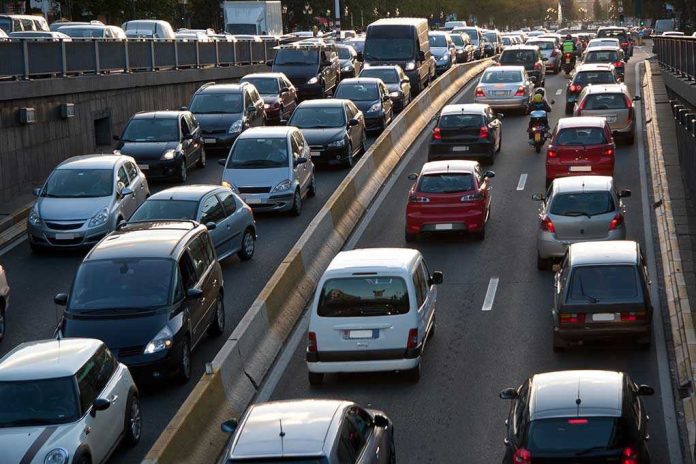🔴 Website 👉 https://u-s-news.com/
Telegram 👉 https://t.me/usnewscom_channel
Lyft riders can now block or favorite their drivers—a move that finally gives users more control, but it also exposes the absurdity of years of tech “progress” that somehow missed the most basic common sense.
At a Glance
- Lyft introduces long-requested “favorite” and “block” driver features for riders
- Riders gain unprecedented power to avoid drivers they distrust or reward those they prefer
- Drivers face new realities—potential loss of income or new loyal customers—based solely on user whims
- Expert opinions highlight both safety benefits and potential risks of misuse or unfairness
Lyft’s New “Block” and “Favorite” Tools Signal a Shift in Rideshare Power
After years of riders voicing frustration over being matched with the same unsatisfactory drivers, Lyft has finally unveiled features allowing users to “favorite” drivers for future rides or “block” drivers they never want to see again. The move, rolling out in July 2025, is Lyft’s answer to mounting user demands for more control after a decade of safety incidents and tone-deaf tech bureaucracy.
Lyft’s approach stands out from the tired “rate your ride” system, which rarely shielded riders from repeat negative experiences. Now, with a few taps, riders can ensure they never again get matched with a driver who left them uneasy, or reward a great one by favoriting them. The features are being gradually introduced, with many riders already seeing them as part of Lyft’s expanded Safety Hub—a suite that also includes audio recording and PIN verification. Meanwhile, drivers can only wonder if their next ride will be a loyal fan or someone who’s blocked them without warning.
Why Did It Take So Long for Common Sense to Prevail?
For years, rideshare giants like Lyft and Uber touted safety with splashy, feel-good features while ignoring the elephant in the room: real user agency. It took public outrage, lawsuits, and relentless stories of riders stuck with drivers they didn’t trust for Lyft to finally break from industry tradition and let users directly block or favorite drivers. Regulators and safety advocates have long pressured platforms to do more, especially as reports of assaults and accidents—though statistically rare—added up to thousands of real lives affected every year.
Unlike previous safety efforts, which focused on background checks or after-the-fact reporting, this change puts power directly in the hands of the rider. Blocking is handled discreetly via the Safety Hub, and the company claims drivers will not be notified when they’re blocked. Favorited drivers, on the other hand, get a clear edge: they’re prioritized for future trip requests from fans, and can even see who’s favored them. The logistics are more complicated for Lyft, but the move signals that user pressure—when loud and relentless enough—actually works, even if it takes a decade.
Winners, Losers, and the Untold Consequences
Riders who have suffered through awkward or concerning rides are the biggest winners, finally able to take action beyond a one-star rating that often meant nothing. Frequent users can build a roster of trusted drivers, bringing a touch of old-fashioned accountability back to the gig economy. For drivers, the new system is a double-edged sword: it offers the chance to build a fan base and score more consistent work, but it also means the risk of being “ghosted” from future matches based on a single bad impression or even misunderstandings.
Experts and advocacy groups warn that while increased user control is mostly positive, it’s not without risks. There are concerns about misuse, potential discrimination, and the lack of transparency for drivers who may lose income without explanation. The industry as a whole will be watching to see if Uber follows suit or if these changes further divide the platforms. Early signs suggest that if Lyft’s experiment succeeds, it could become the new standard—forcing competitors to finally respect user agency after years of tone-deaf tech paternalism.
Does This Actually Make Rides Safer?
Lyft and Uber have always pointed to low incident rates—less than 0.0004% of rides involve serious safety events—but with millions of rides each year, even rare incidents add up to thousands of victims. Legal experts and safety advocates agree that giving users direct control over who they ride with is a long-overdue step toward real safety, not just PR spin. However, they caution that the feature’s effectiveness will depend on adoption rates and how well the company enforces these new preferences.
The move may also set off a broader wave of user-driven safety tools across the gig economy, as customers everywhere demand more say in who gets their business. For now, riders can celebrate a rare victory for common sense—one that should have happened a decade ago, but is finally here thanks to relentless pressure and the willingness to call out tech absurdity when we see it.
Sources:
Lyft 2024 Safety Transparency Report
AutoInsurance.com Rideshare Safety Guide 2025
Levin Simes legal analysis of Uber/Lyft safety
University of Chicago study on rideshare and traffic fatalities
